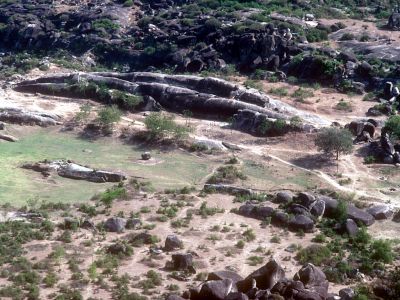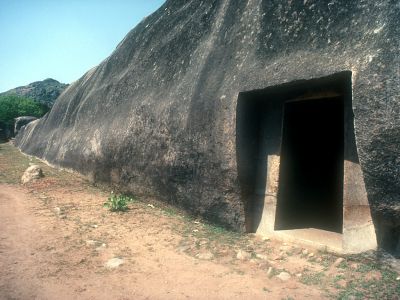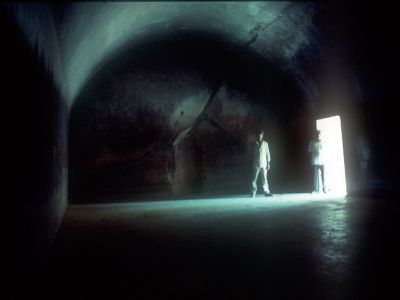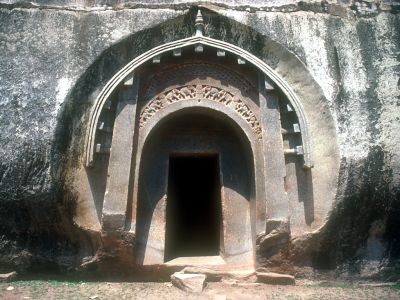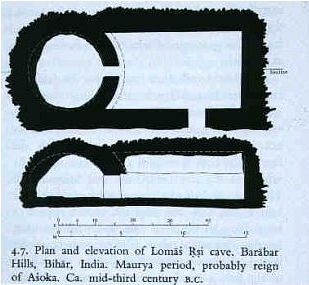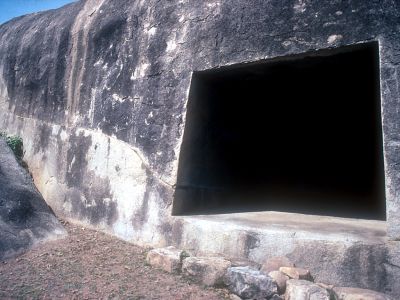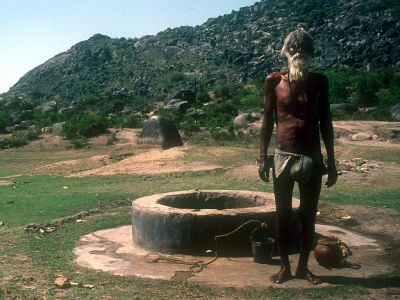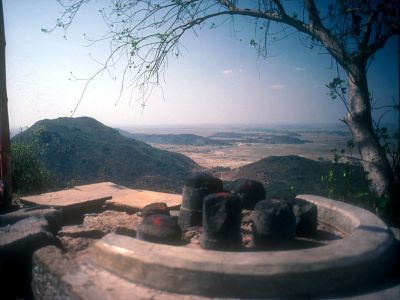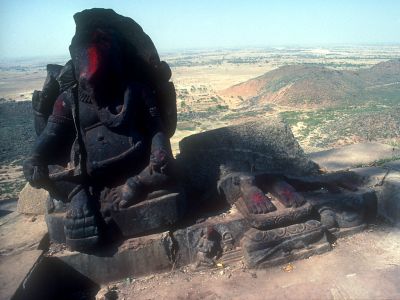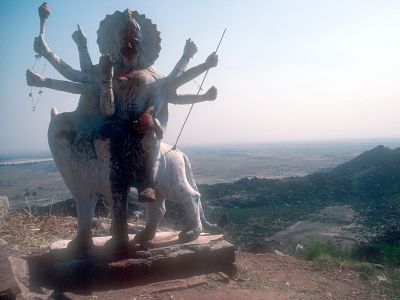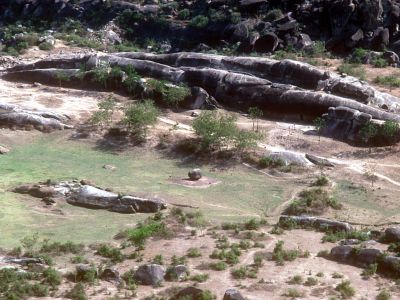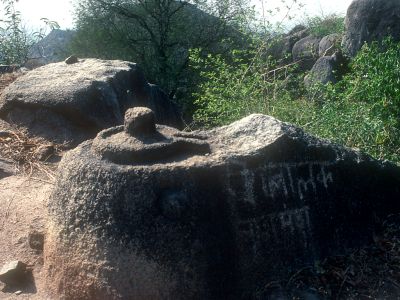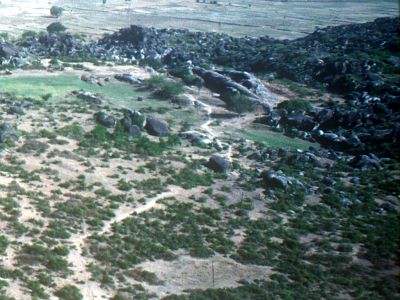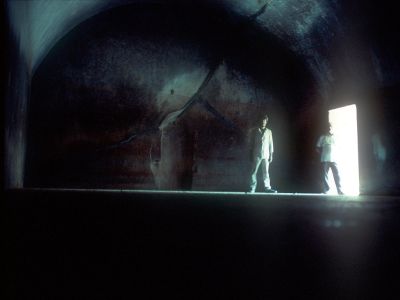The Barabar Caves - 1
Barabar and Marabar - why the similarity? What and where are the Barabar Caves? What and where are the Marabar Caves? The explanation goes like this...
The Barabar Caves are some 35Km north of Gaya, in the state of Bihar. They were visited by author E.M. Forster on one of his two visits to India. Struck by their curious echo, he used them as a central location in his book 'A Passage To India', renaming them 'The Marabar Caves' for the story. The Marabar Caves don't really exist. Well, that's almost true. You can find out more about them on my Marabar Caves page, but for now, lets talk Barabar.
Location
The Barabar Caves are some 25Km north-east of Gaya, in the state of Bihar. The 12Km rough track leading to the caves turns east off the main road to Patna at Bela, (30m minutes from Gaya, 2 hrs from Patna) where buses stop. Bela is some 20Km north of Gaya. From there you should allow 4 hours to walk up, or 45 mins by 4-wheel drive along a very bumpy track. It is only safe to go in daylight, and not alone. Enquire about safety at Belagunj Police Station.
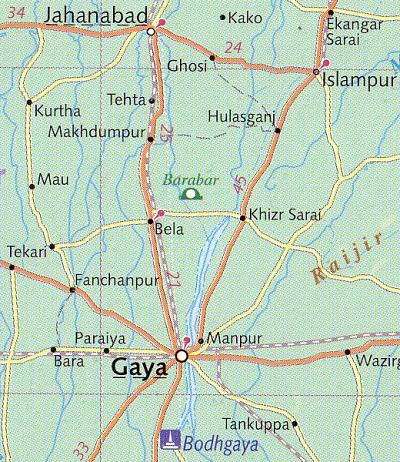
Map of Gaya, Barabar, and Bodgaya
The whale-backed quartzite gneiss hill stands in wild and rugged country. Inscriptions reveal that, on instructions from Asoka (264-225 B.C.), four chambers were excavated, cut and chiseled to a high polish by the stone masons, as retreats for ascetics who belonged to a sect related to Jainism, the Ajivika sect. That polish still remains, 2,300 years later. Percy Brown pointed out that the extraordinary caves, particularly the Lomas Rishi and the Sudama, are exact copies of ordinary beehive huts built with bamboo, wood, and thatch. The barrel-vaulted chamber inside the Sudama, also known as the Nigoha-Kubha or Banyan tree cave, is 10m long, 6m wide, and 3.5m high which through a doorway leads to a circular cell of 6m in diameter. The most impressive craftsmanship is seen on the facade of the Lomas Rishi which replicates the horseshoe-shaped gable end of a wooden structure with two lunettes which have very fine carvings of lattice-work and rows of elephants paying homage to Buddhist stupas. Excavation is incomplete as there was a possibility of the cave collapsing. There is also a Siva temple on the nearby Siddheshwar peak.
At Nagarjuna Hill, 1km northeast of Barabar there are three further rock-cut sanctuaries: the Gopi (milkmaids) cave having the largest chamber. Inscriptions date these to about 50 years after the excavations at Barabar. I wasn't aware of the Nagarjuna caves in 1993, so didn't visit them.
I visited the Barabar Caves during a trip to India in April 1993. I was staying at the Hotel Ajatsatru in Gaya, conveniently placed on the central square, opposite the railway station. The helpful staff at the Tourist Office there will arrange transport to the caves, though expect to pay a suitable tip at the end. My transport was an auto-rickshaw, and the head of the Tourist Office insisted on coming too, shutting up the shop for the day. We set off through the town of Gaya, then headed north, stopping at Belagunj for tea. After that, the road was indescribably bad, with maybe 10% tarmac, 20% dust, and 70% potholes.
Quite how the auto-rickshaw's suspension and tyres stood up to this battering I will never know. The total journey took about 2 hours, and we arrived in a hill and rock-strewn landscape, which looked as if some giant had taken a huge bucket of boulders and emptied them onto the plains. Some were the size of houses, some smaller. Cut in one huge buried rock, 100 yards long by 20 across and 10 high, were the caves; one on one side and two on the other, and quite big inside.
Here came the interesting part; something that makes quites clear why E.M.Forster thought of these caves for their central role in 'A Passage To India'. I walked into the cave, and sat down to examine just where I was. The cave was barrel vaulted inside, like half an oildrum cut top-to-bottom. The stone surface was very smooth, the result of much chisel work. Just another cave, it seemed, until the guide gave a shout. That shout echoed from the cave walls, and the echo sustained itself in a most curious way, for a period of approximately three seconds. Just try timing that on your watch, and you will see that three seconds is an extraordinary time for a sound to sustain - something that I have never experienced elsewhere, in all of my travels. I made my own sounds, and each one sustained its echo in the same way.
The reason this was done became obvious: a religious chant, once started would maintin itself for that time, and if a new sound was added before the old one died away, the two, and more, sounds would add together for a most astonishing experience. I tried this myself, with a loud sound of 'Ommmmmm'. After a 1 second wait, I added another, and another: what a pity that I had no tape-recorder with me! In the film, this effect was simulated in the Shepperton studios, but here in these ancient caves the effect was real and alive, for all to see.
After a visit to the Caves, I climbed up the nearby hill to Siddheshwar Peak, to see the small Shiva Temple on the top. We were accompanied by the resident holy man/priest/hermit, who had been doing his laundry at a well near the base of the hill. The views from the top were excellent, though spoilt rather by the rickshaw driver, who was eager to be off again, and couldn't understand why someone would want to spend time looking at a view. Back again to Gaya - a thoroughly bone-shaking ride.
Here is an aerial view of the Barabar Caves. They are in that upper long rock-formation. As you can see, they are not very 'photogenic', so for the film, David Lean wanted a more exciting location. Kevin Brownlow writes in his wonderful book 'David Lean - a Biography' that although Forster had actually described, in exact detail, the caves near Patna, his location was not big enough for what David had in mind. "The government said that there could be no filming there because of bandits" said David. "Goodwin took pictures and made a tape of the echo. I was rather disappointed. The echo was alright, but the caves Forster wrote about were at the bottom of rocks only thirty feet high. I'd always seen on the screen in my mind caves at the bottom of a cliff face."
Its probably just as well that they didn't use the Barabar location. Just getting the cast and crew to it would have been a nightmare. To find where they did go, visit my Marabar Caves page.
For the record, I'll finish this page with the description E.M. Forster gives of the caves in his book:
'The caves are readily described. A tunnel eight feet long, five feet high, three feet wide leads to a circular chamber about twenty feet in diameter. This arrangement occurs again and again throughout the group of hills, and this is all, this is a Marabar cave. Having seen one such case, having seen two, having seen three, four, fourteen, twenty-four, the visitor returns to Chandrapore uncertain whether he has had an interesting experience or a dull one or any experience at all. He finds it difficult to discuss the caves, or to keep them apart in his mind, for the pattern never varies, and no carving, not even a bee's nest or a bat, distinguishes one from another. Nothing, nothing attaches to them, and their reputation - for they have one - does not depend upon human speech. It is as if the surrounding plain or the passing birds have taken upon themselves to exclaim 'Extraordinary!' and the word has taken root in the air, and been inhaled by mankind.'
'They are dark caves. Even when they open towards the sun, very little light penetrates down the entrance tunnel into the circular chamber. There is little to see, and no eye to see it, until the visitor arrives for his five minutes, and strikes a match. Immediately another flame rises in the depths of the rock and moves towards the surface like an imprisoned spirit; the walls of the circular chamber have been most marvellously polished. The two flames approach and strive to unite, but cannot, because one of them breathes air, the other stone. A mirror inlaid with lovely colours divides the lovers, delicate stars of pink and grey interpose, exquisite nebulae, shadings fainter than the tail of a comet or the midday moon, all the evanescent life of the granite, only here visible. Fists and fingers thrust upon the advancing soil - here at last is their skin, finer than any covering acquired by the animals, smoother than windless water, more voluptuous than love. The radiance increases, the flames touch one another, kiss, expire. The cave is dark again, like all the caves.'
'Only the wall of the circular chamber has been polished thus. The sides of the tunnel are left rough, they impinge as an afterthought upon the internal perfection. An entrance was necessary, so mankind made one. But elsewhere, deeper in the granite, are there certain chambers that have no entrances? Chambers never unsealed since the arrival of the gods? Local report declares that these exceed in number those that can be visited, as the dead exceed the living - four hundred of them, four thousand or million. Nothing is inside them, they were sealed up before the creation of pestilence or treasure; if mankind grew curious and excavated, nothing, nothing would be added to the sum of good or evil. One of them is rumoured within the boulder that swings on the summit of the highest of the hills; a bubble-shaped cave that has neither ceiling nor floor, and mirrors its own darkness in every direction infinitely. If the boulder falls and smashes, the cave will smash too - empty as an Easter egg. The boulder because of its hollowness sways in the wind, and even moves when a crow perches upon it; hence its name and the name of its stupendous pedestal: the Kawa Dol.'
Please visit Page 2 of the Barabar Cave series..

